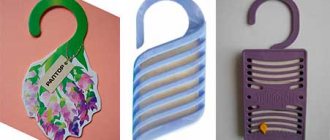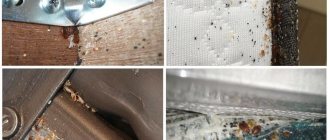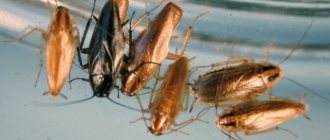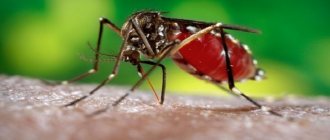Traditional methods
The undoubted advantage of old grandmother's methods is that they are harmless to the health of people and pets. You can almost always find something in the household that repels the pest and prevents it from multiplying in the apartment. Even if the required ingredient is not available, purchasing it will not cause significant damage to the family budget.
Many people have heard about orange peels, laundry soap, all kinds of essential oils and vinegar. These and other means have been tested by time.
An interesting detail: the moth was able to adapt to the action of naphthalene and practically does not react to its smell. Folk (traditional) methods and means have not lost their effectiveness.
There are two types of moths living in our apartments. You need to select herbs based on where they will be used - in the kitchen or in the wardrobe.
All plants that have a pungent odor can be divided into two groups. Some can be adjacent to food, while others cannot.
Many herbs have both medicinal properties and the ability to repel insects. They can be safely used to combat moths that have settled in the kitchen. Plants cope with this task no worse than chemical industry products.
Methods and means of control
There are a large number of ways to combat moths. The insect is effectively destroyed by modern chemicals and mechanical means, as well as proven folk methods.
Modern
Currently, there are a large number of means and preparations to combat moths:
- Fumigators;
- Traps;
- Plates;
- Aerosols.
Fumigators are plastic devices that run on electricity. Inside there is a container with liquid or a plate.
Aerosols are sprayed in wardrobes and closets where things, clothes, and fur products are located.
The traps contain female pheromones and an adhesive base. Males are attracted to the trap by pheromones, stick tightly to the bait and slowly die. The use of traps disrupts the reproduction cycle of insects.
Plates are small cardboard rectangles impregnated with aromatic substances and insecticides.
IMPORTANT: The plates not only rid the room of moths, but also prevent the insect from reappearing for six months.
Folk
Folk methods of fighting moths are no less effective. Adults and larvae cannot tolerate the strong smells of citrus fruits and lavender. Fresh tangerine and orange peels are laid out in the wardrobe, which are changed periodically.
The following essential oils are used to combat moths:
- Orange;
- Tangerine;
- Lemon;
- Lavender;
- Grapefruit.
It is necessary to ensure that the oil does not get on clothes to avoid permanent stains.
You can also place a sachet of dried lavender in the closet - the inflorescences of the plant retain their aroma for a long time.
Scented soap will help prevent moths from appearing in your wardrobe. It is laid out in cardboard boxes or without them on shelves with things, periodically replacing them with fresh pieces.
IMPORTANT: Strong-smelling products only repel adults; they cannot affect larvae and eggs.
Fragrances should only be used after the cabinet has been thoroughly disinfected.
Tansy
This is the most famous folk remedy for all types of moths. Its specific smell forces the pest to leave its shelter. But since the plant is poisonous, it is not recommended to use it to get rid of food moths.
The flowers are especially toxic. In large quantities they are dangerous even for cattle. In small doses, tansy is used as a medicine for many diseases. Grass grows almost everywhere. Helps get rid of not only moths, but also other household pests.
Tansy reaches its greatest effectiveness during the flowering period. Plants must be dried before being placed in the closet. It is better to do this under a canopy in the fresh air.
For ease of use, flowers are made into unique bouquets. Collect 3-4 branches and tie them tightly into a broom. Hang in dressing rooms, closets and on mezzanines.
To prevent the grass from crumbling, it is placed in gauze bags. The packaging in which shoes are sold is perfect for this purpose, so there is no need to throw it away.
It is not recommended to place too many tansy in one closet. Its smell can provoke a negative reaction from the human respiratory system. Moths, unlike humans, sense even a faint aroma and strive to leave this place as soon as possible.
Dry grass should be renewed periodically. If the moth has already bred and hatched many larvae, tansy is used as an additional remedy. Measures to get rid of the pest must be carried out comprehensively.
A moth ruined (ate) a coat - a disaster, what to do?
November 19, 2017
November 19, 2017
Elena Ostinova
Womans-way
There is no need to be upset when you see your favorite item eaten by moths.
There is an easy way to quickly and effectively restore damaged wool fabric with your own hands. We will talk about perhaps the most unpleasant surprise that you can find in your wardrobe. This is a moth-eaten thing.
You never know what exactly the moth will choose as its next meal. The main thing is that the fabric contains wool. This awakens a brutal appetite in this insect and then the problem cannot be avoided. But how to restore a moth-eaten coat or other thing is a question.
Most often, in advice on the topic: what to do with a moth-eaten item, it is recommended to resort to embroidery or appliqué, or to seal the damaged area with a piece of fabric or leather.
But what to do if the jacket or coat is damaged in many places, and this can be on the back and lower, where embroidery or appliqué is completely inappropriate.
How to disguise (hide) moth marks?
There are even more radical recommendations - cutting off the damaged part.
We will try to save our thing using another method.
Our method is most suitable for fabrics such as cashmere, beaver, vigon, and of course drape. The surface of these fabrics is completely covered with a felt-like covering. Often, these are thick, heavy fabrics that have received a large amount of shrinkage. It is the method of its manufacture that tells us how to literally make amends for the damage caused by the insatiable insects.
Restoring a moth-eaten coat or jacket is especially difficult because of the fluffy smooth surface; it literally cuts out (eats away) entire clearings on the surface of the item.
Let's start repairing (restoring) the coat after it was eaten by moths
To remove damaged or moth-eaten areas, we will need a felting needle (felting needle) and a brush as a felting mat (so as not to injure your fingers).
Depending on what kind of needle you have available, we will act in our particular case. The main goal we are pursuing is to form the lost (eaten) cover (or layer of pile). Let’s make a reservation right away: for a situation where an insect has eaten a through hole, our method is not suitable.
Using the right needle, we will use our material as in the felting technique. We need to pull the pile from the back side of our fabric onto the front side.
The type of needle you have will tell you how to proceed in each case.
If the needle is thin, triangular, then you need to push the pile from the inside to the face
And if the needle is reverse triangular, then on the contrary, from the front side we pass the needle to the wrong side and pull the pile from the wrong side to the face.
The quality of the fabric and the needle used is of great importance in successfully solving the problem. The fabric must be sufficiently fleecy, and the needle must be suitable for our purpose. But you can’t do anything worse than having your coat eaten by this pest. So take action with confidence.
And, finally, it is advisable to iron the restored area with a steaming iron. To do this, you need to lay gauze or a special mesh for ironing and walk the iron over the place where there was just a hole that we repaired.
We think the result will definitely please you.
As you understand, you can easily correct a moth-eaten defect on any clothing, be it a woolen skirt, jacket or cardigan.
Restore a moth-eaten coat or blanket.
The only thing that cannot be restored in this way is a eaten through hole or a chewed fur item
And all other damage caused by the pest can be repaired.
Good luck in your fight against the eternal enemy of the contents of cabinets, wardrobes and mezzanines.
Article rating / 0
Give your rating!
comments
Name: You have not entered a name
A comment:
You have not entered text
Enter the characters from the image:
You have not entered the code
The code doesn't match
Anna
01/23/2021, 20:16 I’m looking for a master in Moscow who can teach me how to jointly fix a similar problem in a coat. Write your contact, we’ll come to an agreement. Always relevant! Thanks reply
Artemisia grass
Moths do not like the bitter smell just like the aroma of tansy. If you smell the plant, you will feel a peculiar taste in your mouth. In large quantities, wormwood can cause reactions such as dizziness and severe headaches.
To successfully fight moths in an apartment, it is enough to place several sprigs of dried wormwood in the closet. They will not cause any harm to health, but will drive away insects.
Under the influence of the aroma of grass, butterflies lose orientation in space and cannot lay eggs. Wormwood is used as a preventative and control measure. It is better not to use it in the kitchen against food moths.
Wormwood essential oil has the greatest effect. It drives moths out of the closet. Its vapors kill bacteria that are harmful to health.
It is useful to keep pads soaked in wormwood oil in a drawer or bag with socks. This will protect them from moths and help eliminate the problem of unpleasant foot odor.
Covers for fur coats against moths: an effective measure of protection
Covers will help protect clothes - an excellent anti-moth remedy for fur coats. They are needed for seasonal clothing made of drape, mixed fabrics and fur , which moths especially love.
Coats, fur coats, jackets, suits and dresses are stored in covers; they are suitable for transportation and protect clothes from dust.
Products can be purchased at hardware stores (for example, the Raptor brand); the best options for storing valuable mink and sable coats are offered in specialized fur salons.
The best covers are made from modern synthetic materials that do not interfere with normal air exchange. They are hermetically fastened with a zipper or Velcro tape.
Products may be impregnated with repellent drugs. Such covers are very effective , but anti-moth impregnations are toxic and not suitable for allergy sufferers .
Soaked products should be protected from children and pets; clothes packed for storage should be placed in the closet so that they do not touch other things. It is advisable to allocate a separate section for it. Impregnated anti-moth covers remain effective for up to 12 months .
An alternative could be a product made from thick cotton or thin plastic. You can make a convenient case yourself.
The style is simple : a rectangle with a sewn bottom and a zipper along the entire length. The size depends on the length of the product; the coat or fur coat should fit into the case freely, without tucking.
Hand-sewn covers must be washed every year after the end of the storage season. They can be treated from the inside with aerosol preparations that repel moths. At home, it is better to use odorless preparations. They irrigate not only the covers, but also the walls of the wardrobe.
Watch a video on how to properly prepare a fur coat for storage:
Lavender
The subtle smell found in the aromas of many cosmetics and perfumes is very unpleasant to moths. This feature of the plant is used in the development and manufacture of industrial products. Buy lavender-based essential oil at the pharmacy, soak napkins in it and place it on the shelves with your laundry.
In a closet with outerwear, “lavender” scraps are tied in a knot on a crossbar or placed in the pockets of fur coats and sheepskin coats. The good thing about this method is that the clothes removed from the wardrobe do not emit a chemical aroma, but smell quite pleasant.
Applications of lavender flowers:
- Dry plants are laid out in the depths of the shelves (3-4 branches are enough for each).
- As the aroma wears off, the flowers change.
- The supply should be kept in a tightly closed container. It is better if it is glassware.
When sending warm blankets for summer storage, dry them in the sun and put them in bags with lavender sprigs. In sealed packaging, the aroma lasts much longer than on cabinet shelves, so dried flowers do not need to be changed.
How to get rid of clothes moths
It is quite difficult to remove clothes moths. Moreover, considering the fact that caterpillars can go without food for a month. There are folk, chemical and professional means of insect control.
Regular monitoring
In order to minimize the risk of invasion, regular inspections are carried out in cabinets and shelves. Both butterflies and larvae cannot exist without giving themselves away. In their habitats there will certainly be damaged areas of tissue, gnawed pieces of fur, threads of cobwebs, cocoons and feces.
If you suspect the presence of unwanted guests, you should react immediately, otherwise trouble cannot be avoided.
Preventing or reducing infestations
Cleaning a living space infested with clothes moth larvae should be carried out with special care.
- It is necessary to pay attention to hard-to-reach places: behind radiators and ventilation holes, under baseboards and wardrobes.
- Wipe shelves and furniture with a special disinfectant.
- When using a vacuum cleaner, upon completion of work, you must immediately dispose of the contents of the dust collection bag so that the larvae and eggs that get there cannot return again.
If moths are found in a closet, you should remove all items from there and wash all surfaces.
Protecting things in the closet
Sachet for the closet.
Clothes and other items left in the closet without proper care are most susceptible to insect attacks.
Therefore, they should be stored in clean, dry form, in sealed containers, pre-treated with natural repellents, for example, mint, lavender, wormwood, or use special chemicals, dichlorvos.
Freezing and heating
Moths do not like low or high temperatures.
Moth butterflies die when there is a sharp change in temperature, and it does not matter in which direction this difference occurs. This could be temperatures above 50 or below 20 degrees Celsius.
The product, previously placed in plastic packaging, is either fried in an oven or frozen in the freezer. It all depends on the type of fabric: if it is not afraid of these types of processing, then you can safely take them into service.
Dry cleaning will help get rid of moth larvae.
The contents of the closet are reviewed for damage, and surviving clothes are washed and fried at high temperatures. Bright sunlight is not a moth's best friend; it dies in the light.
Washing is done at a temperature of at least 50 degrees and for a duration of at least half an hour. Textiles that cannot be washed at high temperatures should be dry cleaned.
Traps
Sticky trap.
Another method of control is glue pheromone traps. This is the simplest, most accessible and relatively cheap method. The principle of its operation is very simple.
The female follows the smell emanating from the trap and sticks her paws to the glue, gets stuck there and dies. You can purchase it at any specialized institution.
Mint
This herb is versatile. It is used not only in the wardrobe, but also in the kitchen. The smell is pleasant, it has a beneficial effect on the human nervous system and calms. For moths, the scent of mint is a signal to leave the apartment.
If you have a summer cottage, you can grow mint there. In the pharmacy it is sold already in dried form, although recently picked plants work better.
Mint grows well in indoor pots. You just need to get hold of rhizomes for planting. You can not only forget about moths, but also drink aromatic tea with fresh leaves.
If the butterfly has already laid eggs, then mint alone is unlikely to help. To combat larvae, you need to add tansy or wormwood to the bouquet.
It is useless to fight against food moths by laying out grass on shelves. First you need to get rid of contaminated products, clean the cabinets and only then place mint sprigs next to the cereals.
Since the larvae left the house along with the garbage, the eggs were washed off with a rag, all that remains is to get rid of the butterflies. The mint flavor will cope with this very quickly. In just a few days you will not see a single moth flying around the kitchen.
Other herbs
All folk (natural) remedies for moths are based on the use of odors that this insect is afraid of.
Can be used:
- sweet clover;
- chestnuts (leaves and fruits);
- yarrow;
- sage.
Some housewives make bouquets of them.
For this:
- Take a tansy branch and put wormwood on it.
- Then sweet clover, and even lower - sage.
- The bouquet is tied with an elastic band and the excess is cut off.
- Already in this form, the broom can be hung in the closet. There it will dry.
Dense wreaths are woven from fresh flowers and grass that protects against moths and dried in this form.
Newspapers
Moths cannot stand the smell of printing ink. Our grandmothers covered the shelves of cupboards and wardrobes with newspapers. To protect your favorite fur coat from damage, you can remember the old folk method and put several crumpled newspapers in a case with outerwear.
To achieve the greatest effect, the press must be fresh. When storing winter boots in your closet, stuff your boots and boots tightly with crumpled up newspaper. In this way, two problems are solved: the shoes retain their shape, and moths will never appear in them.











